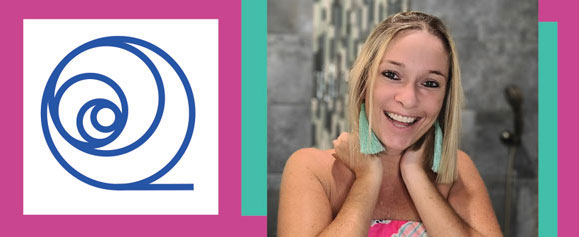In 2009 I moved back home to the Bahamas for a career change. I was studying to become a financial trader at 26 years old. After about a year of living in the Bahamas I took a day to celebrate the graduation of finishing my trading studies by meeting some friends at a Tiki hut bar over the ocean.
On August 21, 2010 I dove off this Tiki hut bar into what had to be about 3 feet of water. I grew up in the Bahamas, but I misjudged the depth of the water. I thought it was about 5 feet. Unfortunately, I was wrong!
I dove into the water and hit my head pretty hard. Fortunately, I did not drown and was still conscious. From my many wilderness survival trips around the world I was fairly confident I had just sustained a spinal cord injury. I held my breath under the water until somebody came to get me with what seemed like hours. I’m guessing about 20 seconds later my mother, who was with us at the time, rushed over because she could sense something was wrong. I had one of my friends pick me up out of the water. I was aware that with a spinal cord injury you need to be laid flat and not upright in order to prevent any further damage to the spinal cord.
Most people do not have a video or pictorial account of their accident. Interestingly, we had a family friend down at the time who photographed the entire thing. Clearly she did not know I had broken my neck at the time, but as you can see from the pictures below everything was caught on camera. I did not see these pictures until about six years later as I did not know about them, but they did not elicit a response of sadness, but rather one of curiosity.

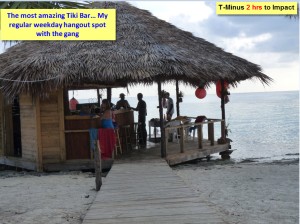
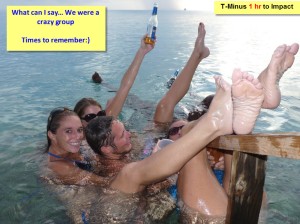


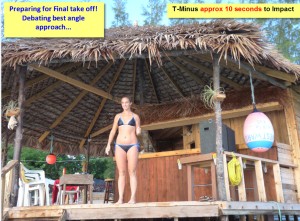


Unfortunately, I was out of breath and they sat me up upright in a chair … with what breath I had left I whispered into someone’s ear “Let me flat, lay me flat.” I then proceeded to direct my own medical care as we called an emergency jet service. If you can believe it the emergency jet service could not find a pilot at that time. It was approximately 5 PM in the afternoon on a Saturday and we called all around the island to see if anybody else had a connection. Unfortunately, the island I grew up on is extremely remote, did not have a doctor, and is about 326 miles away from the coast of Miami.
Eventually we did find a jet service, but they informed us they could not get there for about five hours. We built a makeshift neck brace and put me on a wooden plank so to speak. Fortunately, there happened to be a nurse on the island at that time and she had the foresight to insert a catheter in me, which probably saved my life.
I was on the back of a pickup truck waiting for help to arrive when about 100 folks from around the island came to sit with me. I knew I was not allowed to eat or drink, but I did smoke some marijuana to keep my nerves down. Five hours later the jet arrived, but there was only room for one other person in the plane. My father, who is extremely cool, calm, and collected under pressure accompanied me.
I was fully conscious for the entire event and I was getting military like updates from my father who was calling the United States to make sure there were surgeons on call to meet me at the hospital. As fate would have it, there was a wall of thunderstorms around Miami and I was unable to fly into the hospital. We turned around and went to the capital island of the Bahamas called Nassau. We rushed in an ambulance to a third rate hospital where they did an MRI. The neurosurgeon on call at that time told me that my spinal cord was severed and I would never walk again. Talk about a shock… I’m about eight hours into my injury and I cannot understand how this guy could possibly make such an assessment.
Eventually the storms cleared and we hopped on another jet to Miami … 21 hours later I was preparing for surgery as my father was trying to get details on what they were going to do. I was alone with a bunch of residents who were talking about me as the “patient” and I was right there. I explained to them that I do have a name and I am fully able to comprehend full sentences. They went silent.
I was circling the drain as I approached Jackson Memorial Hospital in Miami. When the body is severely injured it produces a rush of adrenaline for about 24 hours. This keeps the blood pressure up, but after about a day the adrenaline starts to dissipate and your body cannot produces a chemical called “Dopamine,” which is what keeps your blood pressure up. The Bahamian hospital and the emergency jet service did not have any dopamine on hand, so by the time I got to the hospital my blood pressure was around 45/20. I was struggling to keep my eyes open and just barely made it.
As I was wheeling into the operating room I had on a bikini from when I had jumped into the water. I remember so clearly the residents taking a scissor and attempting to cut off my bikini. I immediately chimed in and announced that the bikini had a tie on the side, and there was no need to cut it off! I was sure I was going back in the water in a few weeks 🙂 To top it off they wanted to take out my belly ring, which at the time was a huge travesty in my mind! I made the promise not to lose it … It’s funny what one prioritizes in a medical emergency.
I woke up from surgery several hours later surrounded by my brother, sister on the way, and father. They explained the situation to me, but I was not very shocked because I had 21 hours to process what had happened. It was unclear whether I was going to be an incomplete injury or complete. You do not become paralyzed from the actual bones breaking in your neck, but rather the swelling inside the spinal cord, which does not regenerate. If you are an incomplete injury then you can think of the bruise inside your spinal cord as having holes in it where signals can get through to move up and down your spinal cord. With a complete injury, while motor function recovery is possible, is less probable. Generally, one does not know for about a year or two after injury if they are complete or incomplete based on the amount of functional recovery that returns. It can be a painstakingly grueling process from a mental perspective.
I also woke up with a pressure sore down to the subcutaneous fat level right over my sacrum. You see, I was on a hardboard in a bikini for 18 hours and was not turned once. Unfortunately, it only takes two hours to get a pressure sore, so I was hit with two pieces of bad news at the same time. I think the pressure sore took about nine months to heal and I had to turn every two hours in bed. This probably was more traumatic than the spinal cord injury itself in my personal opinion.
The most challenging and terrifying part for me was when the nurses killed me. I was on a “Dopamine” drip in order to keep my blood pressure from tanking and my heart from stopping. I was on a machine with 500 mml bags that dosed out the dopamine appropriately. Unfortunately, they ran out of 500 mml bags and put a 250 mml back on the machine, but forgot to reset the machine. I was hanging out with my sister my mom one day when all of a sudden I felt dizzy and I woke up being resuscitated. I have to admit I was terrified to fall asleep for several weeks for fear of not waking up. This is a blog post all in its own as I had the most incredible & intense out of body experience!
As the months rolled on I participated in rehabilitation, developed a pulmonary embolism, and dealt with the nightmares of trying to figure out how your body works with spinal cord injury. This includes things such as: neuropathic pain, bowel accidents, bladder issues, catheter issues, etc. The list is pretty much endless of the things that can go wrong the first few months that you break your neck. Suffice to say, I was fortunate to survive rehabilitation with a cheery disposition because my family swarmed around me and never left me alone for the many months I was in the hospital.
The other aspect of what saved me is continuing to work even in the ICU. My father brought my laptop back from the Bahamas and had me trading even in the ICU. He would put the computer with a desk over my head, I would look at the charts, and I would tell him where to buy and sell. Essentially, he was a proxy for my hands.
I was extremely fortunate because when many people break their neck they lose their livelihood and ability to work. Luckily, my new career depended on my mind, not my body. So, I had a constant distraction and determination even through a rehabilitation!

“Trading 10 days after Surgery”
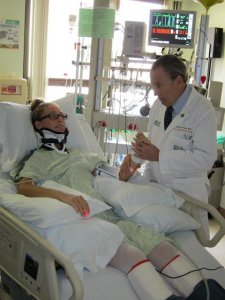
“Consulting with my neurosurgeon, Dr. Barth Green”

“Sitting up for the first time in five weeks after my injury”

“Smile for the Camera”

